Changes in the right-of-way rules
by David Dellenbaugh
Part 2 of the rulebook is called ďWhen Boats Meet,Ē and it contains all the basic right-of-way rules numbered from 10 to 22. All these rules will remain the same for 2001-2004, except rules 16.2 (Changing Course), 17.1 (On The Same Tack - Proper Course), 18 (Rounding and Passing Marks and Obstructions) and 20 (Starting Errors; Penalty Turns; Moving Astern).
In this article, I am focusing on rule 16.2 because it along with the others affect how we maneuver our boats around the race course. I have included the text of the rule (both old and new, for comparison), plus diagrams and written comments explaining how the new rule (2001-2004) is different from the old (1997-2000).
Fortunately, the right-of-way rules (and most others) have not been changed all that much. In fact, if you go watch a regatta one year from now, I bet you wonít notice any difference in tactical behavior compared to what you have seen this past year. It is important, though, to understand the rules as well as possible, expecially if you do any close tactical racing, and thatís why Iím looking closely at the new rule in this article.
| New |
16 Changing Course
16.1 When a right-of-way boat changes course, she shall give the other boat room to keep clear.
16.2 In addition, when after the starting signal boats are about to cross or are crossing each other on opposite tacks, and the port-tack boat is keeping clear of the starboard-tack boat, the starboard-tack boat shall not change course if as a result the port-tack boat would immediately need to change course to continue keeping clear.
|
| Old |
16 Changing Course
16.1 When a right-of-way boat changes course, she shall give the other boat room to keep clear.
16.2 In addition, when after the starting signal a port-tack boat is keeping clear of a starboard-tack boat, the starboard-tack boat shall not change course if as a result the port-tack boat would immediately need to change course to keep clear. |
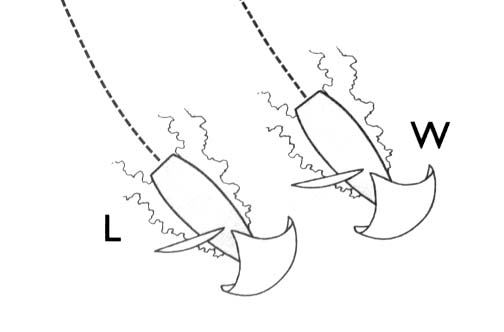 |
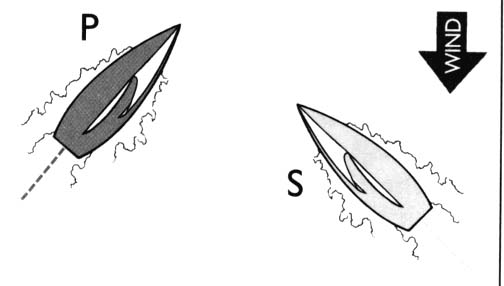 |
A. Luffing after starting
This situation will be treated the same under the new rules as it was under the old. L has the right of way because W is the windward boat and must keep clear. Therefore, when L changes her course, rule 16.1 says she must give W room to keep clear. Rule 16.2 does not apply here because these boats are not on opposite tacks. |
B. Crossing tacks upwind
This situation will also be treated exactly the same under the new rules. S has the right of way, so when she changes her course, she must give P room to keep clear. In addition, because it is after the start and the boats are on opposite tacks, S must not change course in a way that causes P to change her course immediately to keep clear. If she does, then S breaks rule 16.2. |
Changes in rule 16.2
Rule 16 is, in my opinion, the most Fundamentally important rule in the entire rulebook, for without it we would have chaos. Every racing sailor must have a good understanding of their obligations and rights under this rule. Thatís why I have devoted a good bit of space in this article to the basic rule.
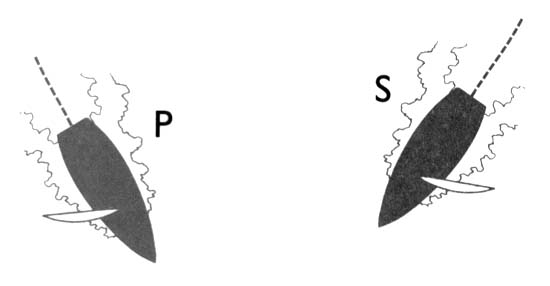 |
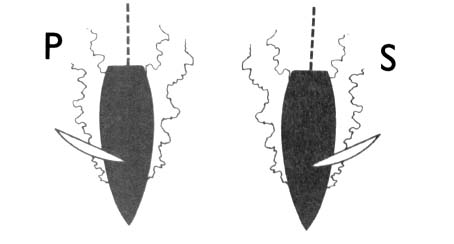 |
C. Crossing tacks downwind
This is a lot like Situation B because itís after the start and you have two boats crossing each other on opposite tacks. Therefore, if the right-of-way boat (S) changes course, she must give P room to keep clear. In addition, S may not change course if as a result P would immediately need to change course to keep clear (rule 16.2).
|
D. Parallel courses downwind
Hereís where the new rule 16.2 creates a slight game change. Under the old rules a port tacker that was running downwind could get quite close to a starboard tacker on a similar course. Thatís because rule 16.2 said the starboard tacker couldnít change course if this forced the port tacker to change course immediately.
Rule 16.2 no longer applies to this situation, however, because the new rule applies only when the boats ďare about to cross or are crossing each other...Ē Here the boats are not crossing, so Sís course changes are not limited by 16.2. |
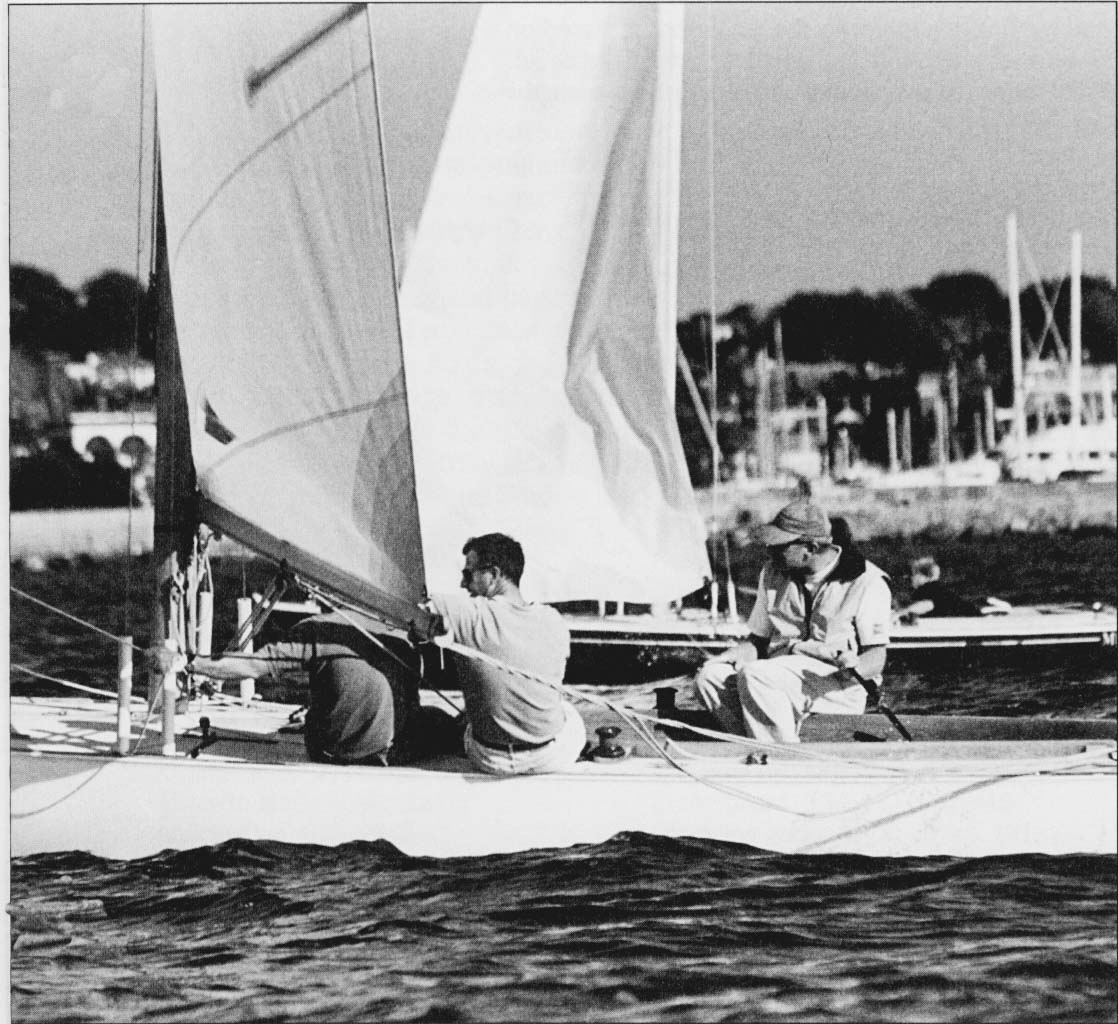 |
| These two Shields one-designs are running downwind on opposite tacks and parallel courses. Under the old rules, the starboard tacker (S, in the foreground) had to be careful when she turned toward the port tacker (P). If P had to change course immediately to keep clear, then S broke rule 16.2. Under the new rules, however, S does not have to worry about rule 16.2 because these boats are not on crossing courses. |
One more thing about rule 16
When the 1997-2000 rules were first published, rule 16 applied everywhere on the race course. This consistency was nice because sailors knew that whenever a right-of-way boat changed course, she had to give other boats room to keep clear. Then, two years ago, an exception to rule 16 was added into rule 18.2(b). As a result, there were occasional times when rule 16 was turned off near marks.
Now the new 2001-2004 racing rules have created even more situations where rule 16 turns off near marks. To find out more about these, read rule 18.2(d).
Dave is a two-time Americaís Cup veteran who publishes the newsletter Speed & Smarts. For a subscription call: 800-356-2200.




